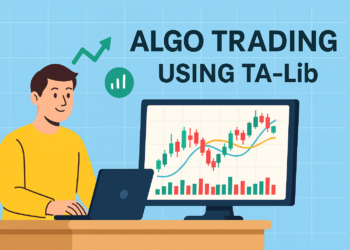Algorithmic trading, or “algo trading,” refers to using computer programs to automate trading decisions. By leveraging historical data, mathematical models, and real-time market feeds, traders can execute trades with speed and precision. Whether you’re a beginner or an experienced trader, understanding algorithmic trading can give you a competitive edge.
Why Algorithmic Trading?
Algorithmic trading offers several benefits:
- Speed and Efficiency: Algorithms can analyze market data and execute trades much faster than a human.
- Minimizing Emotions: Automated systems remove emotional decision-making, reducing the risk of impulsive trades.
- Backtesting and Optimization: Strategies can be tested on historical data before applying them to live markets.
- Consistency: Unlike manual trading, which can be affected by fatigue or emotions, algorithms follow predefined rules consistently.
Key Concepts in Algo Trading
Before diving into coding, it’s important to understand some fundamental concepts:
- Market Data: Includes historical price data, volume, and financial indicators.
- Technical and Fundamental Analysis: Traders use these methods to predict price movements.
- Trading Strategies: Examples include mean reversion, momentum trading, and arbitrage.
- Backtesting: Simulating a trading strategy using past data to evaluate its performance.
Fetching Market Data with Python
To get started, let’s fetch five days of market data using yfinance, a popular Python library that provides access to Yahoo Finance data.
Example: Fetching 5-Day Market Data with Python
import yfinance as yf
def get_market_data(ticker):
stock = yf.Ticker(ticker)
data = stock.history(period='5d')
return data
# Example Usage
ticker_symbol = "NVDA" # Replace with your preferred stock symbol
data = get_market_data(ticker_symbol)
print(data)This script retrieves the last five days of market data for a given stock ticker. You can replace "NVDA" with any stock symbol of your choice.






